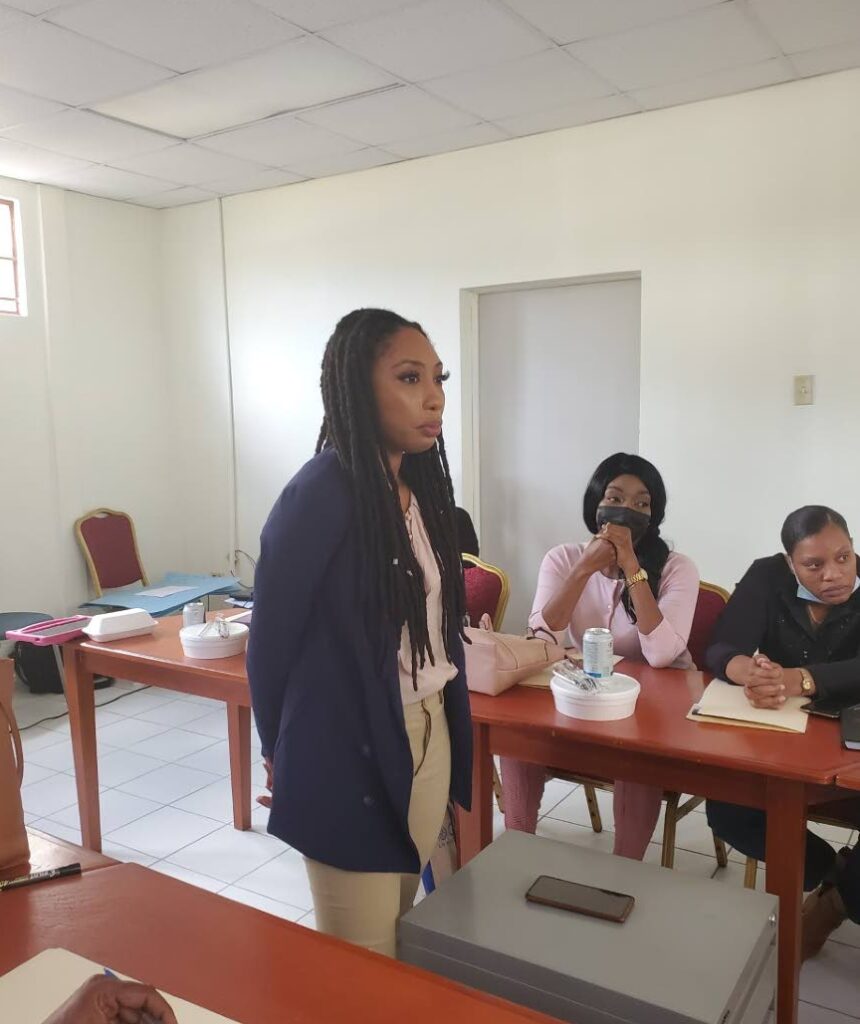Differing views on whether gender-based violence increased during pandemic

The three pillars of victim centred engagement with survivors of gender-based violence are respect, empathy, and maintaining the dignity of the person.
Human rights educator Adeola Young made the statement during a police sensitisation session on gender-based violence (GBV) facilitated by the Caribbean Vulnerable Communities Coalition, at the Coalition Against Domestic Violence, Belmont, on Friday.
The officers present were from the Gender-Based Violence Unit, Child Protection Unit, and the Inter-Agency Task Force.
Young said gender-based violence was a human rights issue which applied to men, women, non-binary people, and children.
“GBV is about a power imbalance. The violence is carried out with the intent to harm and humiliate the victim.”
She said while it affects women disproportionately, men are also abused, but do not feel comfortable reporting owing to the gender roles and the accompanying behaviours society imposes on them.
Young said there had been an increase in instances of domestic violence during the pandemic, both worldwide and in TT. However, officers disagreed saying there was no clear link to the pandemic; that in many cases the abuse started years before and was only now being reported because the GBV unit had been established. They said people would normally go to their families to cool off when tempers were high but were calling the police to de-escalate situations during the locked down.
Young said that these factors could mostly be attributed to the changes in society brought about by the pandemic and its attendant measures.
She outlined the various forms which GBV can take. These include physical violence, which can range from slapping and hitting, to murders and encompasses trafficking and safety.
“It may be done not only to cause pain but to control and take away dignity and self-determination. It sends a clear message that “I can do things to you that you don’t want to happen.”
She said lesbian, gay, bisexual, transgender, queer, and intersex people were especially vulnerable to physical violence, which could be spontaneous or planned.
Verbal violence is another form, which can include picong, saying bad things or making up stories about someone, calling a woman a whore, insulting a man’s genitals, insulting someone because of their ethnicity, e.g., Vene or Chinee.
“Psychological abuse is based on power and control and can take the form of isolation and confinement, withholding information, disinformation, threatening behaviour, gaslighting, invasion of privacy, intentionally neglecting your partner’s needs, and lying and manipulating their family and friends.”
She said sexual violence is defined as non-consensual sexual contact of any type, or causing another person to interact sexually with another person, as in forced threesomes. These include marital rape, attempted rape, stealthing, date rape, unsolicited nudes, secret filming of sexual acts, being forced to watch someone masturbate, forced unsafe sex, sexual harassment, unwanted advances, and touching.
She noted that abuses related to reproduction, including forced abortion, forced pregnancy, forced sterilisation, and female genital mutilation.
Financial or socio-economic violence was also common, Young said.
She said some of the factors which made people more vulnerable to abuse were age – young people and the elderly, nationality, socio-economic status, sexual and gender identity, and occupation.
She explained the cycle of violence that occurs in an abusive relationship, which is split into three phases: tension-building, acute explosion, and the honeymoon phase.
“The abuser and the victim both exhibit certain behaviours during each of these phases. Running through the victim’s response is denial, which can lead them to returning to the relationship again and again in the hope that they can change the abuser. This can also apply to children.
“Don’t underestimate the abuser, as they are deliberately manipulative. The victims need psycho-social intervention, as they will not leave unless they are emotionally and financially ready to go.” Young asked the officers to be patient with victims of GBV as they go through the cycle.
The participants asked Young and the public to remember that police officers might also be going through some of the same things as victims and asked them to apply the three pillars as well.
Attorney Terry-Ann Roy spoke about some of the legislative changes which had been developed/implemented to deal with GBV, including changes to the Domestic Violence Act, the National Policy on Gender Development, electronic monitoring, the abolition of child marriage, the implementation of the GBV Unit, and others. She urged the police to connect with organisations on the ground that were working with vulnerable communities.
Participants said the police would enforce laws once they were implemented. Roy said the presence of laws meant little unless there was a culture change, including teaching children to treat others with respect.


Comments
"Differing views on whether gender-based violence increased during pandemic"